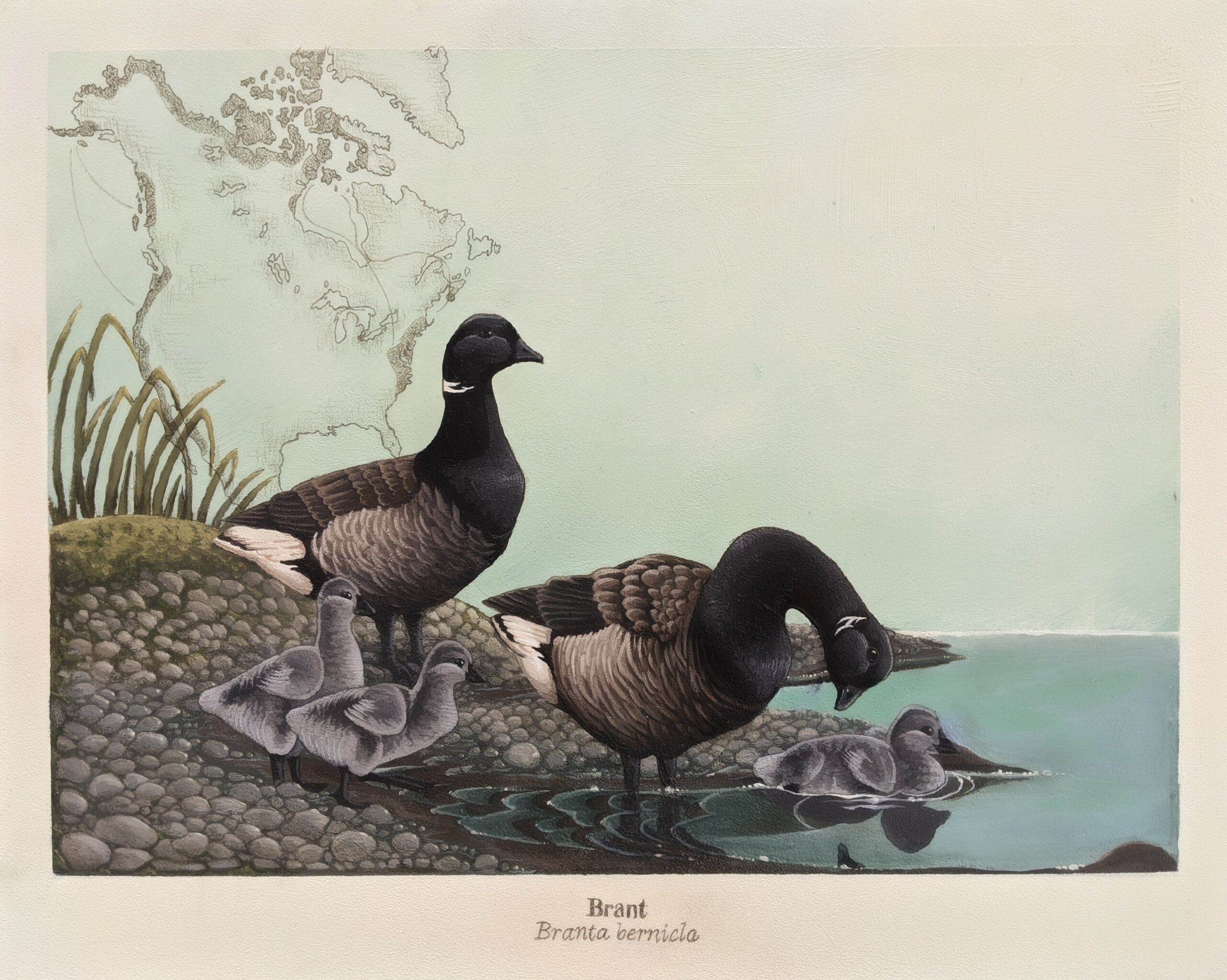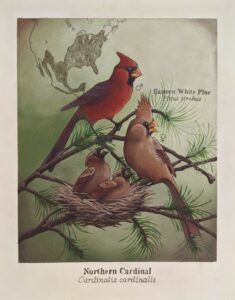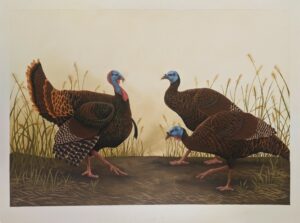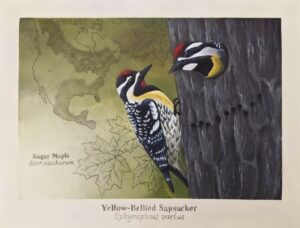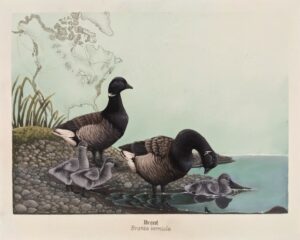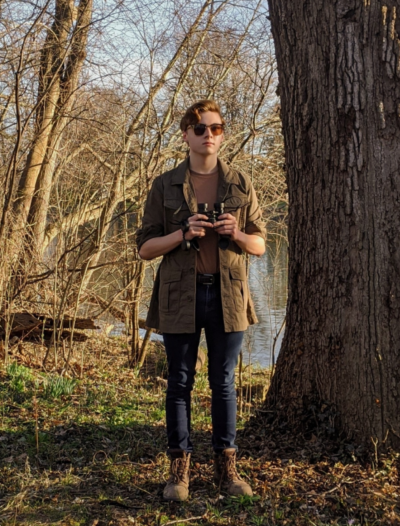 Meet Brant Georgia, contributor to the Michigan Young Birders Network and recent high school graduate.
Meet Brant Georgia, contributor to the Michigan Young Birders Network and recent high school graduate.
How did you first get interested in birds and birding?
I first became interested in birds four or five years ago when I adopted a pair of budgies. By studying their physiology, I became fascinated with the novel strategies they had developed to survive. Soon after, I began studying birds as a whole, and I was absolutely captivated by the diversity and uniquity displayed by them. After my budgies, I also began keeping domestic pigeons and mallards.
My interests were originally contained to aviculture and bird husbandry rather than watching wild birds, but soon after, my family moved onto a beautiful plot of woodland beside a river. It was there that I gained an appreciation not just for birds but for the natural world surrounding us. Cottonwood trees towered above, with woodpeckers flicking through their limbs and groundhogs barreling around their roots. I now have a keen interest in acquainting myself with each member — animal, plant, and fungi — of my local environment.
As an accomplished artist, what’s your favorite part about painting birds?
I originally started painting birds simply due to a want of a subject for my paintings. Birds happened to be the object of my interest, as well as being aesthetically pleasing and well-liked by the general public. My artwork eventually gained a purpose beyond aesthetics, that being science education. In my illustrations, I often include information about the subject through visual elements, including geographic range maps, sexual dimorphism, ideal habitat, and even number of offspring. I like to think of my artwork as in-depth, aesthetically-pleasing field guides.
Beyond scientific purposes, birds also have a poetic nature to them. Humans have ascribed meanings to certain birds, sometimes even spiritual in nature. I like to explore these themes in my work through color use, spatial placement, and body language of the birds themselves.
You jumped in and took an active role in getting the Michigan Young Birders Network up and running. Tell us a little about your experience. What has been the most rewarding part?
I originally joined the Michigan Young Birders Network on recommendation from a Michigan Audubon member. Having been one of only a few young birders in my area, I was in want of a community that shared similar interests to my own. I very quickly found myself in a group of young naturalists who are not only knowledgeable but supportive and fun as well. I began attending birding events with my peers, which helped me learn about birds much more efficiently while also having fun with friends!
Eventually, I found myself leading MYBN projects in conjunction with other passionate leaders from the network. I am grateful for the platform that MYBN has given me to further nature education for those of my age group, as well as the educational resources that I have received as a result of the program. I hope MYBN continues to grow and thrive so others can reap the same experiences that I have.
Where do you still see challenges we need to address when reaching young birders? How do you think we can better encourage young people to get involved in the birding community?
The largest obstacle to reaching youth through nature education is apathy. This is not to say that today’s youth are less passionate or inquisitive than those of the past. In fact, the opposite may be true. I think it is more an issue of cultural shifts in terms of academic priorities. Unfortunately, an aptitude for the natural world has descended on that list in favor of other, more utilitarian subjects. An education in the natural sciences is simply not as valued as it once was. I think it is important that we not only reach youth through nature education but also emphasize the importance and benefits of gaining such knowledge. This is doubly true in a world threatened by climate disaster and in a society becoming increasingly detached from our natural roots.
Birding can be a great introductory hobby that can eventually lead youth to become acquainted with their local environment. Through this, young people may find themselves in a better state, both mentally and physically, and they may also find a passion that would fulfill them on a deeper, personal level.
Congratulations on your recent high school graduation. Tell us about what’s next for you. How do you plan to keep birds in your life?
I will be attending Cornell University’s College of Agriculture and Life Sciences, majoring in biological sciences with a minor in science communication. I hope to engage in studies concerning avian field ecology at the Cornell Lab of Ornithology. I would also like to be involved with specimen preparation and preservation at the Cornell University Museum of Vertebrates. My dream career would be working in specimen collections in a natural history museum. I think that preserved specimens are great tools for artists, scientists, and educators, and I wish to have a hand in facilitating that. I also hope to continue my artwork and become involved in scientific illustration as a side career.
Michigan Young Birders Network
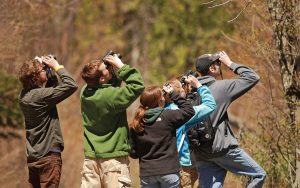 The Michigan Young Birders Network is a program of Michigan Audubon that aims to connect young birders, ages 13–18, offering a space for them to share their enthusiasm for the avian world. The network is managed by young birders who contribute to the programming, content, and community, which focuses on connecting and educating young birders about birds and conservation.
The Michigan Young Birders Network is a program of Michigan Audubon that aims to connect young birders, ages 13–18, offering a space for them to share their enthusiasm for the avian world. The network is managed by young birders who contribute to the programming, content, and community, which focuses on connecting and educating young birders about birds and conservation.
How do you learn more about getting involved in the MYBN?
- Follow MYBN on Facebook, Instagram, and Twitter.
- Sign up for the eNewsletter.
- Read the MYBN blog.
- Attend a virtual meeting on the first Wednesday of the month at 7 p.m. You can find more information, including how to login on the event in the Michigan Audubon calendar.
Are you ready to join MYBN? You can start your adventure by filling out our MYBN Interest Form.
Please contact Education Coordinator Lindsay Cain at lcain@michiganaudubon.org or (517) 580-7364 with any questions.

